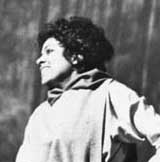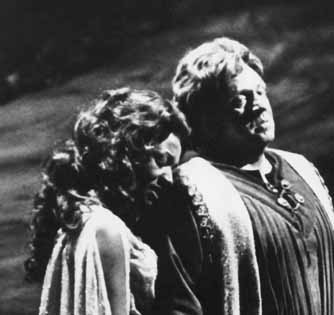Key Word Search
Multi-Field Search
Browse
Repertory Report
Performers Report
Contacts
Met Opera Website
New Production
Tannhäuser
Metropolitan Opera House, Thu, December 22, 1977
Debut : Bernd Weikl, Kathleen Battle, Mark Freiman, Gerard Hecht, Daniel Tramontozzi, Patricia Zipprodt
Tannhäuser (393)
Richard Wagner | Richard Wagner
- Tannhäuser
- James McCracken
- Elisabeth
- Leonie Rysanek
- Wolfram
- Bernd Weikl [Debut]
- Venus
- Grace Bumbry
- Hermann
- John Macurdy
- Walther
- Misha Raitzin
- Heinrich
- John Carpenter
- Biterolf
- Vern Shinall
- Reinmar
- John Cheek
- Shepherd
- Kathleen Battle [Debut]
- Page
- Mark Freiman [Debut]
- Page
- Adam Guettel
- Page
- Gerard Hecht [Debut]
- Page
- Adam Hyman
- Page
- Godehard Rau
- Page
- Scott Rigby
- Page
- Robert Sapolsky
- Page
- Daniel Tramontozzi [Debut]
- Conductor
- James Levine
- Production
- Otto Schenk
- Set Designer
- Günther Schneider-Siemssen
- Costume Designer
- Patricia Zipprodt [Debut]
- Lighting Designer
- Gil Wechsler
- Choreographer
- Norbert Vesak
Tannhäuser received ten performances this season.
The Paris version was performed.
FUNDING:
Production a gift of the Fan Fox and Leslie R. Samuels Foundation
Review 1:
Review by Donal Henahan in The New York Times:
"The story of the man who is seduced by the delights of the 'les'. and can be redeemed only by the love of a good woman, preferably a virgin, is told again and again in Western art. Goethe's Faust, Hogarth's Tom Rakewell and Wagner's Tannhäuser all come in conflict with a society that views spiritual love as opposite sides of the coin. The Metropolitan Opera's new production of "Tannhauser" introduced last night, tells the ancient tale once more, and in magnificent fashion.
This was the first "Tannhäuser" at the Metropolitan in a dozen years, given in the more specifically sensual and realistic Paris version, rather than the slightly more circumspect Dresden alternative. With hardly a misstep along the way, Otto Schenk has produced a "Tannhäuser" that goes back to the 19th century in aspect but comes alive for a contemporary audience. Gloriously sung and imaginatively staged, it is a production Wagner might recognize.
The traditional surfaces of the production, however, are subtly shaded so that what Mr. Schenk and the scenic designer, Gunther Schneider-Siemssen, gave us is actually a modern gloss on Wagnerian tradition. The first curtain rises, for instance, on a steamy. moss hung Venusberg that could be celled "realistic," if anyone could really testify to what a Venusberg actually looks like.
But it is a broadly Gothic scene, suggesting a mixture of Hieronymous Bosch paintings and the grotesque illustrations ,of Franzetta. The corps de ballet is having its traditional orgy, but it is a highly stylized orgy that refines the inane grappling of the too familiar operatic group grope. and somehow makes a sensuous scene of it.
Grace Bumbry sinuous and viola voiced, returns to the "black Venus" role in which she created a sensation at Bayreuth in 1961. She contrives to be a symbol without losing credibility as a woman. and James McCracken. the Tannhäuser, is understandably reluctant to leave her to return to the Wartburg, where he is promised the mingled pain and pleasure of this earth, in the shape of the chaste Elisabeth. Mr. McCracken, although he craftily resorted to his mixed voice technique at several trying moments in the Act II. ensemble, was a stentorian hero and an admirably controlled actor.
Leonie Rysanek, as Elisabeth, launched into "Dich, teure Halle" in the overly grand manner that once used to be called traditional but never made sense. But after a spate of fluoridate that had her caressing benches and making love to chairs, she settled into a persuasively ardent and rich voiced performance. The voice filled the house at all times, even in the pianissimo flights that filled the house at all times, even in the pianissimo flights that Miss Rysanek has long since made her trademark.
James Levine, conducting with vigor and yet the utmost consideration for his singers, could also be thanked there, of course. Mr. Levine carried the performance at the end of his stick, pacing it with a fine theater conductor's ear for the drama. This was his first "Tannhäuser but there were no cracks or open seams to betray that fact.
The tragedy of "Tannhäuser"-and it can be called a tragedy in spite of the rather lame and unconvincing redemption scene at the end-is that the minstrel is alone among the inhabitants of the Wartburg in realizing that physical and spiritual love are not irreconcilable opposites. Only Wolfram, sung with rare intelligence and dignity in his Metropolitan debut by Bernd Weikl, catches a glimmer of the idea, He, however, is in love with Elisabeth and says what he thinks she wants to hear.
This production, for all its bow to tradition, lets us see such conflicts. where the usual "Tannhäuser" offers only a one dimensional struggle between good and evil. The hero here fails to persuade the. arid Wartburghers that Venus and Elisabeth are the same eternal woman, and , he is sacrificed on the tribal altar of hypocrisy and priggishness. Mr. McCracken thus looms as a kind of medieval Hegel, urging synthesis in a world that lives by the law of the excluded middle.
The sets, unobtrusively aided by projections, use the Met's deep stage imaginatively to suggest vast spaces and long perspectives. Gil Wechsler's lighting is bright enough to please traditionalists but never garish. Patricia Zipprodt, in her Met debut, has designed costumes in a marvelous array of pale shades, so the slightly faded medieval tapestries are suggested.
The chorus has seldom sounded more alert and caught up in the drama. Every role sem to have been cast with exceptional care. Kathleen Battle, a Met newcomer, gave a piping quality to her Shepherd's song, and there were excellent performances by John Macurdy, as the Landgrave, and his nobles: Misha Raitzin, John Carpenter, Vern Shinall and John Cheek.
Photograph of Grace Bumbry as Venus and James McCracken in the title role of Tannhäuser by James Heffernan/Metropolitan Opera.
Photograph of Kathleen Battle as the Shepherd by James Heffernan/Metropolitan Opera.
Search by season: 1977-78
Search by title: Tannhäuser,
Met careers
- James Levine [Conductor]
- James McCracken [Tannhäuser]
- Leonie Rysanek [Elisabeth]
- Bernd Weikl [Wolfram]
- Grace Bumbry [Venus]
- John Macurdy [Hermann]
- Misha Raitzin [Walther]
- John Carpenter [Heinrich]
- Vern Shinall [Biterolf]
- John Cheek [Reinmar]
- Kathleen Battle [Shepherd]
- Mark Freiman [Page]
- Adam Guettel [Page]
- Gerard Hecht [Page]
- Adam Hyman [Page]
- Godehard Rau [Page]
- Scott Rigby [Page]
- Robert Sapolsky [Page]
- Daniel Tramontozzi [Page]
- Otto Schenk [Production]
- Norbert Vesak [Choreographer]
- Günther Schneider-Siemssen [Set Designer]
- Patricia Zipprodt [Costume Designer]
- Gil Wechsler [Lighting Designer]

